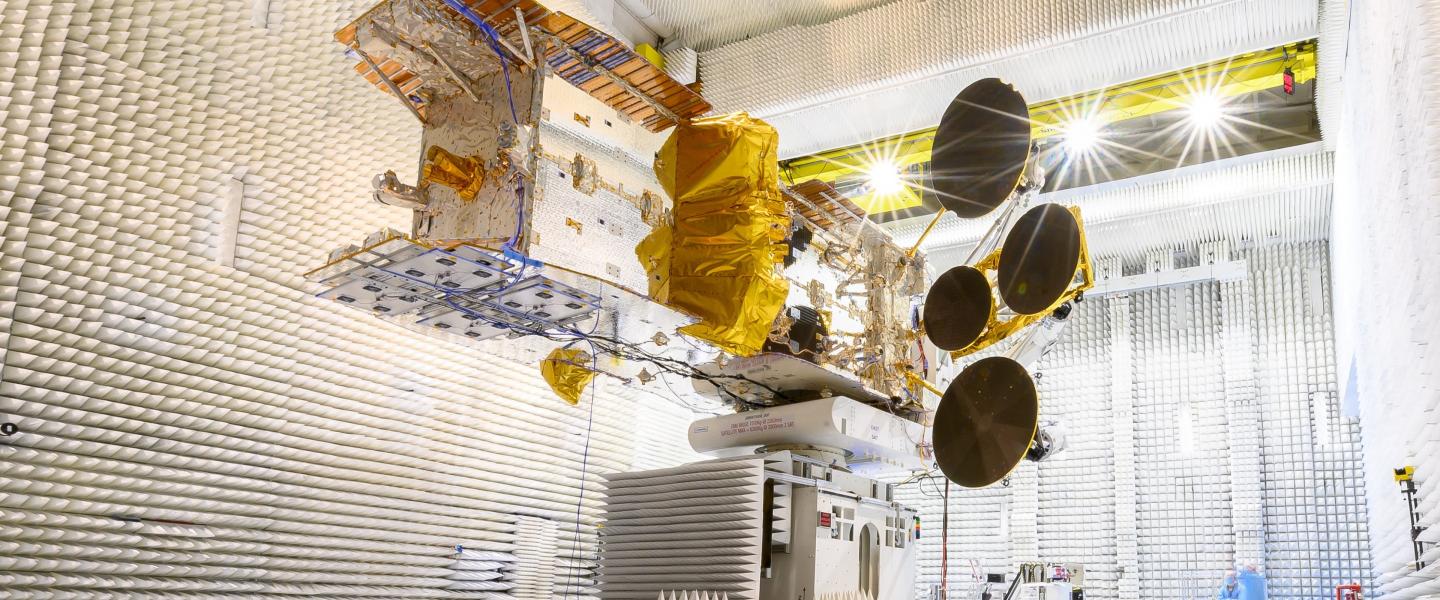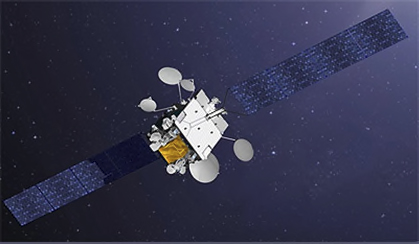Ariane 5 rocket successfully launches two satellites into orbit on its heaviest mission ever
The rocket and two satellites for SES and the French military weighed a combined 11.2 tons.
An Ariane 5 rocket successfully launched two satellites into orbit late Saturday (Oct. 23) on the booster's heaviest mission yet after a one-day delay due to ground system checks.
The French launch provider Arianespace launched the Ariane 5 rocket from the Guiana Space Center in Kourou, French Guiana tonight at 10:10 p.m. EDT (11:10 p.m. local time in Kourou or 0210 GMT Sunday, Oct. 24).
Riding aboard were a commercial communications satellite and the French military satellite, which along with their rocket set a new record of 11.2 tons for an Arianespace launch. It was also the tallest Ariane 5 rocket ever to launch, coming in at nearly 5 feet (1.5 meters) taller than the typical 165-foot-tall (50.5 m) booster.
The launch came after a 24-hour delay to allow more time for additional checks of Arianespace's ground systems at the launch pad. A "red condition" related the pressurization of the Ariane 5 rocket's main cryogenic stage delayed the launch for just over an hour Saturday night before being resolved.
Related: The world's tallest rockets: How they stack up
In a statement early Saturday, Arianespace representatives said that a ground system "anomaly" that thwarted Friday's planned launch "had been identified and corrected," clearing the way for tonight's launch attempt. The mission successfully reached orbit with the SES-17 communications satellite for the Luxembourg-based telecommunications provider SES an the Syracuse 4A military communications satellite for the French Ministry of Defense.
Built by Thales Alenia Space, the SES-17 communications satellite is a high-throughput communications satellite designed to serve SES customers in North America, South America, and across the Atlantic Ocean and Caribbean with high-speed Ka-band communications coverage from a geosynchronous orbit.
Breaking space news, the latest updates on rocket launches, skywatching events and more!
"It will address demands for high-speed and flexible data connectivity across aviation, maritime, enterprise and government segments, advancing the region’s digitalisation objectives and helping to bridge the digital divide," SES officials wrote in a statement last month.
The satellite carries 200 spot beams whose power levels can be tailored to meet customer needs and is the first SES satellite to carry a completely digital payload powered by a Digital Transparent Processor, according to an Arianespace mission overview.
"The Thales Alenia Space's 5th generation Digital Transparent Processor (DTP) embarked on SES-17 allows for easy frequency conversions as well as unlimited gateway switching and traffic routing," Arianespace wrote in the overview. "Combined to flexible amplifiers, it will meet customer’s changing requirements and real time traffic demands."
The Syracuse 4A is also built by French satellite builder Thales Alenia Space and is designed to serve as a communications link between all of France's armed forces and was commissioned by the country's Armament General Directorate.
"At sea, in the air or on the ground, militaries need secured and powerful communication means in order to be able to exchange information with the command center," Arianespace wrote in its mission description. "Thanks to its state-of-the-art equipment (anti-jamming antenna and digital transparent processor on board), Syracuse 4A will guarantee a high resistance to extreme jamming methods."
Syracuse 4A is expected to be joined by two other satellites in the future to create a military communications satellite constellation that can link the country's naval vessels, armored vehicles and aircraft.
"Syracuse 4A will connect most naval vessels, moving armored vehicles or aircraft: in particular Griffon armored vehicles, upcoming Suffren attack submarines or the tanker Phoenix," Arianespace officials wrote.
Editor's note: This story, originally posted at 9 a.m. EDT, was updated late Saturday with confirmation of a successful launch of the Ariane 5 rocket and its two satellite payloads.
Email Tariq Malik at tmalik@space.com or follow him @tariqjmalik. Follow us on Twitter at @Spacedotcom, on Facebook and Instagram.

Elizabeth Howell (she/her), Ph.D., was a staff writer in the spaceflight channel between 2022 and 2024 specializing in Canadian space news. She was contributing writer for Space.com for 10 years from 2012 to 2024. Elizabeth's reporting includes multiple exclusives with the White House, leading world coverage about a lost-and-found space tomato on the International Space Station, witnessing five human spaceflight launches on two continents, flying parabolic, working inside a spacesuit, and participating in a simulated Mars mission. Her latest book, "Why Am I Taller?" (ECW Press, 2022) is co-written with astronaut Dave Williams.



